UPSC Exam > UPSC Notes > Geography for UPSC CSE > Introduction of Transportation
Introduction of Transportation | Geography for UPSC CSE PDF Download
Introduction
- Trade or the exchange of commodities largely depends on transportation and communication.
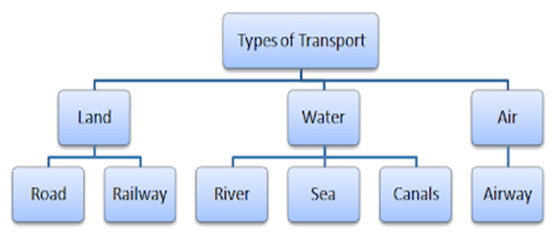
- Transport is a service or facility for the carriage of persons and goods from one place to the other using humans, animals, and other means of transport.
- Transportation normally occurs through the land, water, and air.
 International transportation methods
International transportation methods
Roadways
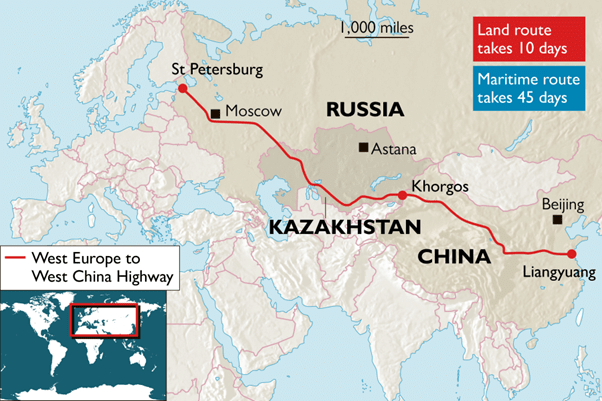 Modern Silk Road
Modern Silk Road
- Road transport is more preferred especially for the short distance, as it provides door-to-door service.
- The world’s total motorable road length is measured about 15 million km, of which North America accounts for 33%.
- The highest road density and the highest number of vehicles are registered in North America.
- In North America, the highway density is about 0.65 km per sq km. So, every place is not more than 20 km distance from a highway.
- Roads laid along international boundaries are called border roads.
Railways
- Probably, the first public railway line was opened in 1825 between Stockton and Darlington in northern England.
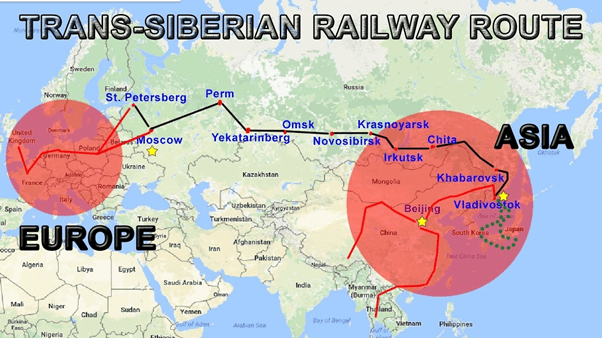
- Belgium has the highest density of 1 km of railway for every 6.5 sq. km area.
- In Russia, railways account for about 90% of the country’s total transport with a dense network west of the Urals.
- Australia has about 40,000 km of railways, of which 25% are found in New South Wales alone.
- Transcontinental railways run across the continent and connect its two ends.
- Trans–Siberian Railways is a major rail route of Russia, which runs from St. Petersburg in the west to Vladivostok on the Pacific Coast in the east.
- Major cities that trans-Siberian railways connect are Moscow, Ufa, Novosibirsk, Irkutsk, Chita, and Khabarovsk (as shown in the map given below).
- Trans-Siberian railways are the most important route in Asia and the longest (i.e. 9,332 km) double-tracked and electrified transcontinental railway in the world.
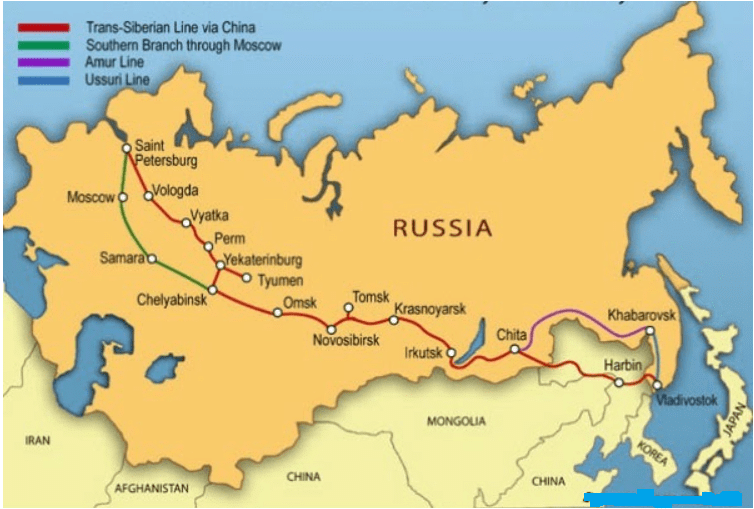
- Trans–Canadian Railways is a 7,050 km long rail line, running between Halifax in the east and Vancouver on the Pacific Coast in Canada.
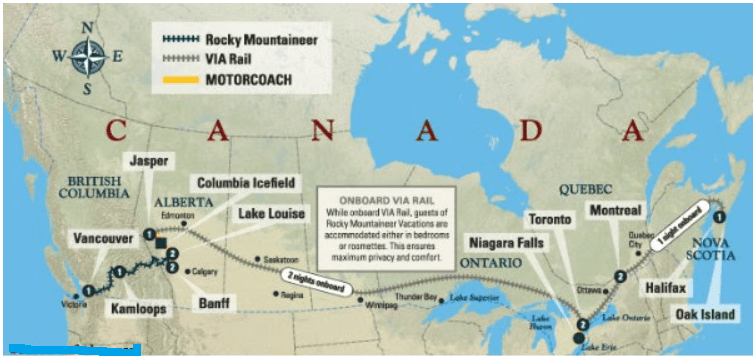
- Major cities that trans-Canadian railways connect to are Montreal, Ottawa, Winnipeg, and Calgary.
- The Orient Express runs from Paris to Istanbul passing through the cities Strasbourg, Munich, Vienna, Budapest, and Belgrade.
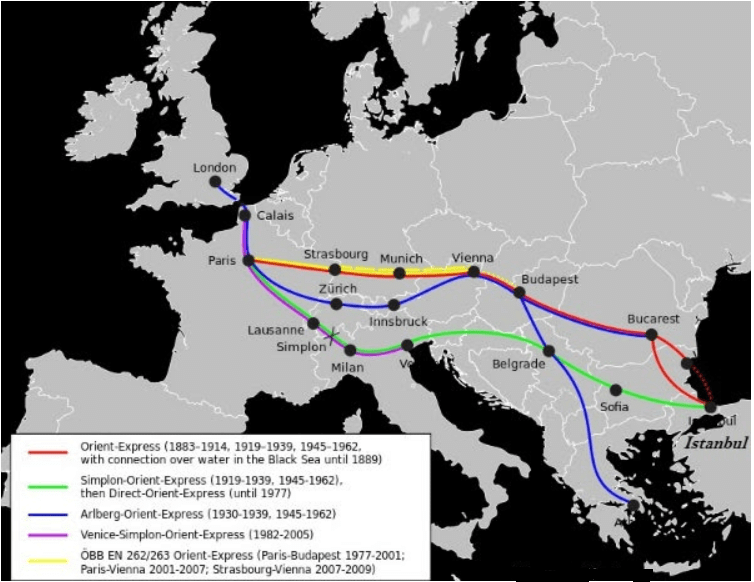
Waterways
- The sea routes offer a smooth highway traversable in all directions with no maintenance costs.
- The Northern Atlantic Sea Route covers one-fourth of the world’s foreign trade; so, it is the busiest sea route in the world and popularly known as the Big Trunk Route.
- The Mediterranean–Indian Ocean Sea Route connects the highly industrialized Western European regions with West Africa, South Africa, South-east Asia, and the commercial agriculture and livestock economies of Australia and New Zealand.
- The Cape of Good Hope Sea Route connects West European and West African countries with Brazil, Argentina, and Uruguay in South America.
- Trade across the vast North Pacific Ocean moves by many routes, which converge at Honolulu.
- The Panama and Suez Canals are two vital man-made navigation canals.
- Connecting the Mediterranean Sea and the Red Sea, the Suez Canal had been constructed in 1869.
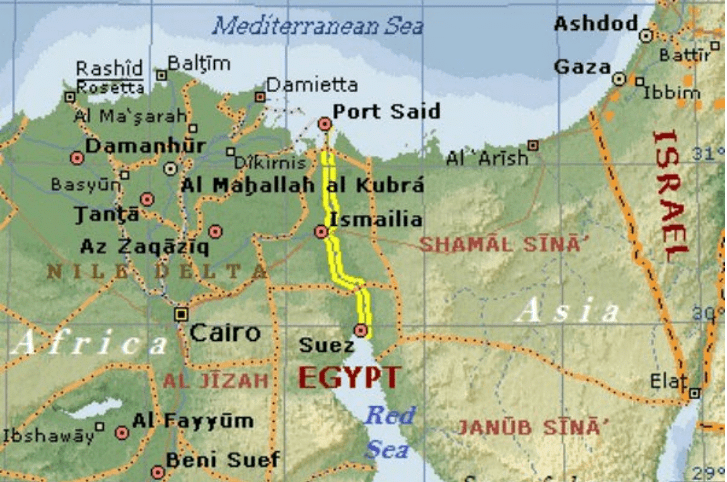
- Suez Canal was constructed between Port Said in the north and Port Suez in the south in Egypt (as shown in the map given below).
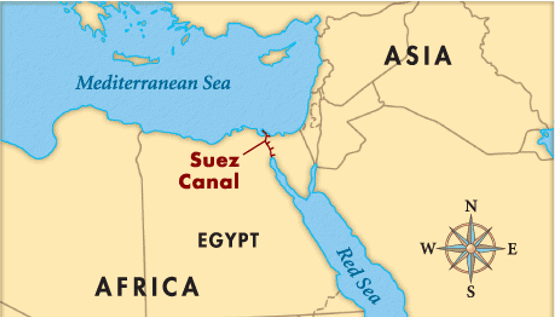
- Suez Canal is about 160 km long and 11 to 15 m deep.
- About 100 ships travel daily through Suez Canal and each ship takes 10-12 hours to cross the canal.
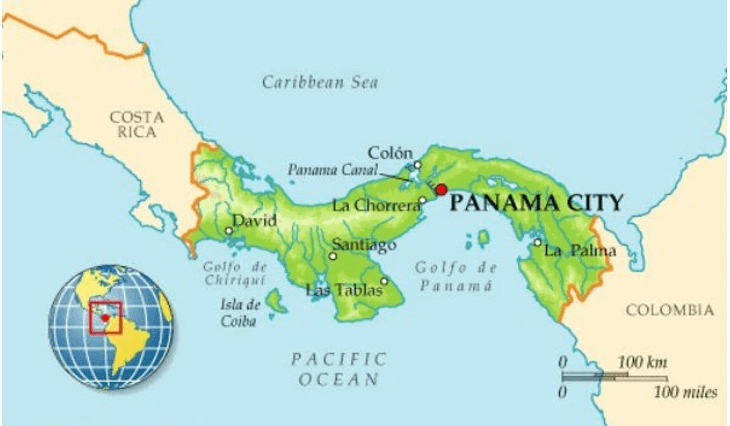
- Panama Canal connects the Atlantic Ocean in the east to the Pacific Ocean in the west (as shown in the image given below).
- Panama Canal was constructed across the Panama Isthmus between Panama City and Colon by the U.S. government.
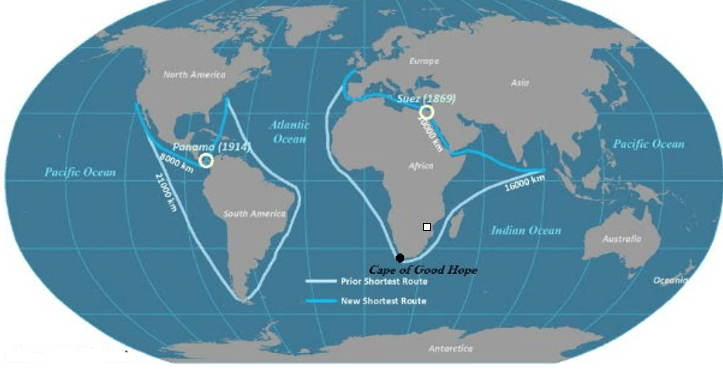
- The reduction in distance because of the construction of Suez Canal and Panama Canal is shown in the following map −
- Rhine River flows through Germany and the Netherlands.
- The Rhine is navigable for 700 km from Rotterdam, at its mouth in the Netherlands to Basel in Switzerland.
- The Great Lakes of North America i.e. Superior, Huron, Erie, and Ontario are connected by Soo Canal and Welland Canal to form an inland waterway.
- Pipelines are normally used extensively to transport liquids and gases such as water, petroleum, and natural gas for an uninterrupted flow.
 Shortest Route through the World’s Capitals
Shortest Route through the World’s Capitals
 Shortest Route through the World’s Capitals
Shortest Route through the World’s Capitals
The document Introduction of Transportation | Geography for UPSC CSE is a part of the UPSC Course Geography for UPSC CSE.
All you need of UPSC at this link: UPSC
|
180 videos|620 docs|192 tests
|
FAQs on Introduction of Transportation - Geography for UPSC CSE
| 1. What are the different modes of transportation? |  |
Ans. The different modes of transportation include cars, buses, trains, airplanes, and ships. These modes are used to transport people or goods from one place to another.
| 2. How does transportation contribute to economic growth? |  |
Ans. Transportation plays a crucial role in economic growth as it facilitates the movement of goods and people, which in turn boosts trade and commerce. Efficient transportation systems can enhance productivity, create job opportunities, and attract investments.
| 3. What are the challenges faced by the transportation industry? |  |
Ans. The transportation industry faces several challenges, including traffic congestion, infrastructure maintenance and development, fuel price fluctuations, environmental concerns, and the need for technological advancements. These challenges require innovative solutions to ensure smooth and sustainable transportation.
| 4. What is the impact of transportation on the environment? |  |
Ans. Transportation significantly contributes to environmental issues such as air pollution, greenhouse gas emissions, and noise pollution. The burning of fossil fuels in vehicles releases harmful pollutants, leading to climate change and health problems. Implementing sustainable transportation solutions like electric vehicles and improved public transportation can help mitigate these impacts.
| 5. How can transportation systems be made more sustainable? |  |
Ans. To make transportation systems more sustainable, various measures can be taken. These include promoting the use of public transportation, encouraging carpooling and ridesharing, investing in renewable energy sources for vehicles, improving infrastructure for cyclists and pedestrians, and implementing policies that reduce vehicle emissions. Sustainable transportation aims to minimize environmental impact while maintaining efficiency and accessibility.
Related Searches





















